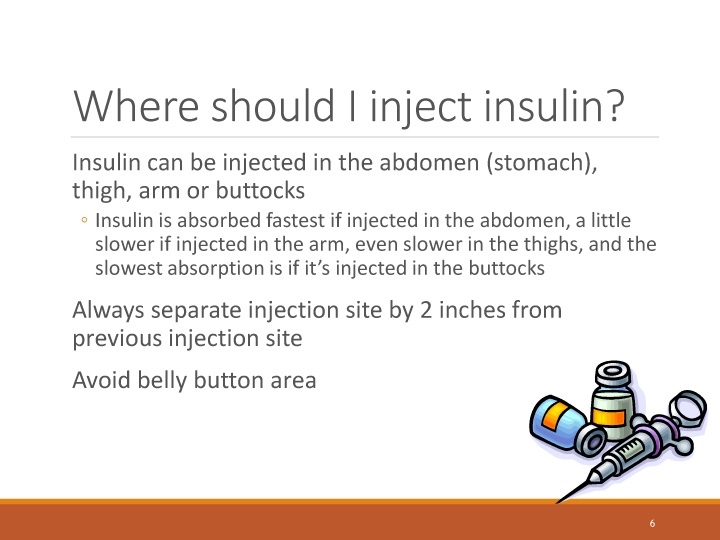Learn more about insulin and how to manage this new part of your life with diabetes.
Being told you will need to give yourself an insulin injection can be a scary thing at first. But once you learn how to give your nearly pain free injections the process becomes much easier. This presentation will show you ways to not only reduce the pain and fear or your insulin shot but will also teach you how to store it as well as details on shelf life and much more.
Managing your glucose is critical to feeling healthier not to mention avoiding repeated health issues of diabetes. Some individuals are able to manage their blood sugar with exercising and calorie restriction by itself. Others will need to use insulin or even any number of medical treatments coupled with lifestyle changes. In any event, monitoring your blood glucose levels is a fundamental part of your treatment program.
In the event you’ve just received a medical diagnosis of high blood pressure, supervising your own glucose levels could seem like an overwhelming undertaking, nonetheless as soon as you learn to check your own blood sugar level and know how fundamental it is, you’ll feel at ease with the practice and more on top of your own disease. Testing is extremely important because it lets you know whether or not you’re continuing to keep your glucose levels in the range you along with your medical professional have agreed on.
The most suitable range in your case depends on your age and the type of diabetes you actually have. For younger men and women who don’t have complications of diabetes, an usual target range might be 80 to 120 mg/dL before meals, and below 180 mg/dL after eating. Older adults who have additional complications from their disease could possibly have a fasting target goal of 100 to 140 mg/dL and below 200 mg/dL after meals. That’s because blood sugar levels that falls too low in older adults can be far more hazardous compared to the younger individuals.
A home blood glucose test measures the amount of a type of sugar, called glucose, in your blood at the time of testing. The test can be done at home or anywhere, using a small portable machine called a blood glucose meter.
Home blood sugar testing can be used to monitor your blood sugar levels. Talk with your doctor about how often to check your blood sugar. How often you need to check it depends on your diabetes treatment, how well your diabetes is controlled, and your overall health. People who take insulin to control their diabetes may need to check their blood sugar level several times a day. Testing blood sugar at home is often called home blood sugar monitoring or self-testing.
If you are using an insulin pump or if you use insulin more than once a day, the American Diabetes Association ( ADA ) recommends testing your blood sugar 3 or more times every day. If you use insulin rarely or don’t use it at all, blood sugar testing can be very helpful in learning how your body reacts to foods, illness, stress,exercise, medicines, and other activities. Testing before and after eating can help you adjust what you eat.



